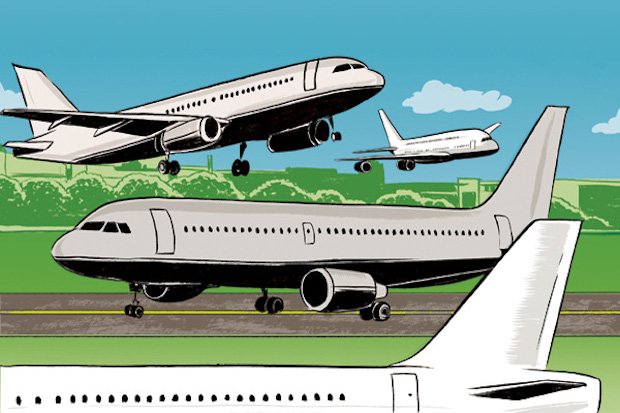Many people claim to speak on behalf of the residents of the Heathrow area, suggesting how much better it would be if they did not have one of the world’s busiest international airports as a neighbour. But what of the residents themselves? For most, Heathrow is not just an airport but the lifeblood of their communities.
According to a recent opinion poll 57 per cent of residents in the 12 constituencies surrounding Heathrow said that they felt ‘positive’ towards the airport, and only 8 per cent said they felt negative feelings. It shouldn’t come as a surprise. For many Heathrow brings in the monthly salary. One in four local jobs is connected with the airport, for example in engineering, air operations or in one of the many cafes, restaurants and retails units which cater for passengers.
An international airport with 470,000 flights and handling 67 million passengers a year didn’t come out of nowhere. Heathrow has grown as an integral part of the local community since 1930, when aeronautical engineer Richard Fairey bought a plot of land from the vicar of Harmondsworth to build an aerodrome with a single grass runway in order to have somewhere to test his planes. The aerodrome, and with it a little hamlet called Heath Row, was requisitioned by the government and used by the RAF during the war. In 1946 it became London’s main airport, and has grown organically ever since.
A third runway will provide an unprecedented opportunity to enhance Heathrow’s relationship with the surrounding communities. From the beginning, it has been a core part of the plans that the development must result in fewer local residents suffering from noise. The third runway will be located further west of the existing runways, meaning planes overflying London to land on it will be at a greater altitude over less built up areas on their approach. The operation of three runways will increase the amount of predictable and guaranteed respite time for local communities, with longer periods allocated when planes will not overfly homes. Better rail connections to the airport, making Heathrow the heart of integrated transport network for the first time will result in no more airport-related road traffic than at present.
Expansion will bring renewed drive to the economy of West London. The third runway will create 70,000 new local jobs, including 10,000 apprenticeships, giving more young people the opportunity to establish careers in the growth industry of air transport.
But you don’t have to work at Heathrow to benefit from it. Business travellers whose work regularly takes them to some of the 180 destinations served by the airport have chosen to set up home nearby. Businesses themselves have chosen the area for their headquarters in order that they can get their goods to international markets quickly – over 200 of the UK’s top 300 company headquarters are located within a 25 mile radius of the airport. Heathrow is not just about passengers; it is also fundamental to UK exports. By value, Heathrow handles more non-EU cargo than Southampton and Felixstowe docks combined. Many goods are carried in the hold of passenger services, the huge number of destinations providing a direct route into export markets which would otherwise by hard to reach. A third runway will add 40 more destinations for passengers and for freight.
You can’t simply tear away an airport like Heathrow from its community and recreate it elsewhere. Many thousands of airport workers would be forced to move home. Businesses which have grown up around the airport would be forced to relocate. The local economy would lose its mainstay. Nor, with other European hub competing for business opportunities, can you carry on operating Heathrow with just two runways and expect it to build the future long-haul routes which are critical to the UK economy.
What you can do, however, is to mitigate the negative effects of an international airport with the major community investment that expansion will bring, by reducing noise, emissions and airport related traffic year on year. That is exactly what Heathrow expansion will do. With expansion, at least 200,000 people will be taken outside Heathrow’s noise footprint compared with today and those that are inside it will be offered more generous noise insulation.
Living next to one of the world’s busiest international airports is never going to be for everyone, but many who have chosen to live and work in the Heathrow area are part of the silent majority that support a third runway. Heathrow expansion will be an opportunity for more business, more jobs, more skills – and the enviable facility of flights to yet more of the world’s countries on West London’s doorstep.






Comments